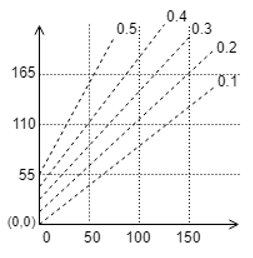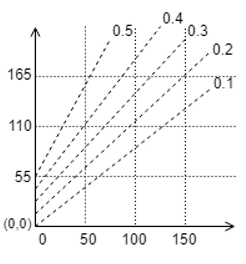1. For Duhring’s Plot to be valid, the range of boiling points must be relatively ________
a) Narrow
b) Large
c) Very big
d) Negligibly small
Explanation: The duhring’s plot should be applied keeping in mind few important concepts of its applications, which is, it cannot be applied for large elevations of BP as well as the solution should follow Roults Law.
2. For Duhring’s plot to be valid and to see its applicability to an operation, we must check if the solution in feed follows __________
a) Henry’s Law
b) Roults law
c) Avogadro’s Law
d) Gas Laws
Explanation: The Duhring’s rule is used to determine the boiling point of a solution at a particular concentration of solute by assuming that the relation between boiling point solution and solvent is a linear function. It is also necessary to consider that the solution follows Roult’s Law.
3. The slope of the Duhring’s Plot is always ______
a) Greater than one
b) Greater than 2
c) Less than 1
d) Less than zero
Explanation: The Duhring’s plot is done between boiling point of pure water as the abscissa and boiling point of solution as the ordinate. Hence the slope is = B.P.of solution/B.P.of pure water >1 as the B.P.of solution is always greater than B.P.of pure water.
4. If the concentration of the solution increases, the Lines shift __________
a) To the left
b) To the right
c) Downwards
d) Upwards
Explanation:The parallel lines of Duhring’s plot are for particular solution concentrations which when increased shifts upwards.
5. Determine the Boiling point of solution if the mole fraction is 0.2 and pure water boiling point is 100℃.
a) 110℃
b) 112℃
c) 100℃
d) 95℃
Explanation:We take the point on X-axis as 100 oC, move upwards to intersect the line of mole fraction 0.2, then we extrapolate this to the Y-axis to obtain approximately 112℃.
6. If the boiling point of pure water is 100℃ and the mole fraction is 0.4, then find the boiling point elevation from the given curve.
a) 92 ℃
b) 102 ℃
c) 12 ℃
d) 52 ℃
Explanation: We take the point on X-axis as 100℃, move upwards to intersect the line of mole fraction 0.4, then we extrapolate this to the Y-axis to obtain approximately 165 + 27 = 192℃, hence the boiling point elevation is = 192-100 = 92℃.
7. If the evaporator operates at very high liquid velocity so that the boiling occurs at the top end of the tube, which one of the following correlation can be used?
a) hiD ⁄ Kpure = 0.003 Re0.8 Pr0.4
b) hiD ⁄ Kpure = 0.027 Re0.8 Pr0.4
c) hiD ⁄ Ksolution = 0.0278 Re0.8 Pr0.4
d) hiD ⁄ Ksolution = 0.003 Re0.8 Pr0.4
Explanation: If the evaporator operates at a higher velocity and the boiling occurs at the top of the tube, then the equation we must use is hiD ⁄ Ksolution = 0.0278 Re0.8 Pr0.4 and not Sieder tate as the working conditions are different for heat exchangers.
8. If the evaporator operates at very high liquid velocity so that the boiling occurs at the top end of the tube, then we use the given relation.
hiD ⁄ K=0.0278 Re0.8 Pr0.4
What is the term K here?
a) Solution thermal conductivity
b) Solvent thermal conductivity
c) Wall thermal conductivity
d) Film thermal conductivity
Explanation: If the evaporator operates at a higher velocity and the boiling occurs at the top of the tube, then the equation we must use is hiD ⁄ Ksolution = 0.0278 Re0.8 Pr0.4, where K is the Solution Thermal Conductivity. We do not use Sieder tate equation because the working conditions are different than heat exchangers.
9. The heat transfer coefficient for rising film and falling film evaporators is same because they can be used in the same setup.
a) True
b) False
Explanation:The setup of rising film and falling film might be the same but the film orientation is different for both the setups and hence the heat transfer coefficients too.
10. If the Reynold’s number is 24000 and the Prantl number = 4.70. Then what is the value of Nusselt number?
a) 164.8
b) 164.0
c) 163.8
d) 165.2
Explanation: we use the formula, Nu=0.0278 Re0.8 Pr0.4=0.0278×(24000)0.8×(4.7)0.4=164.8.